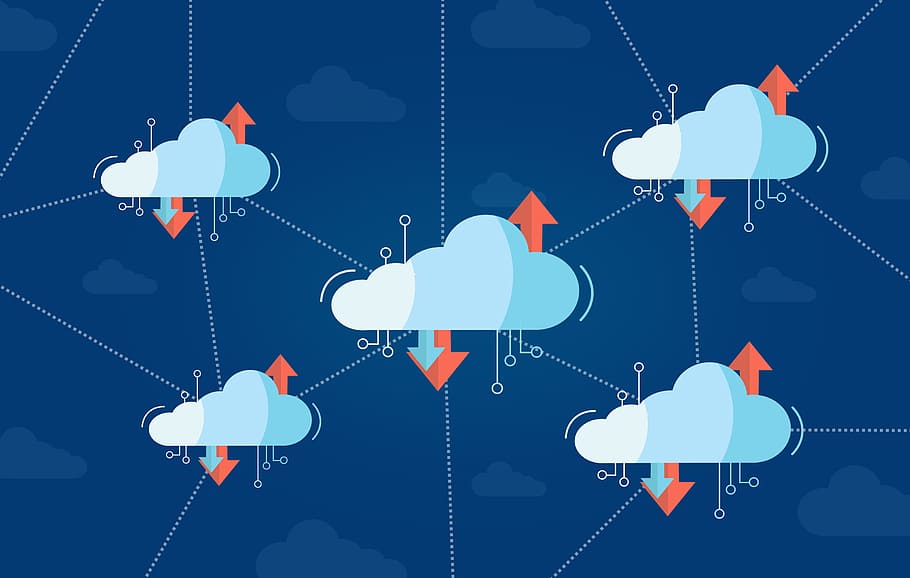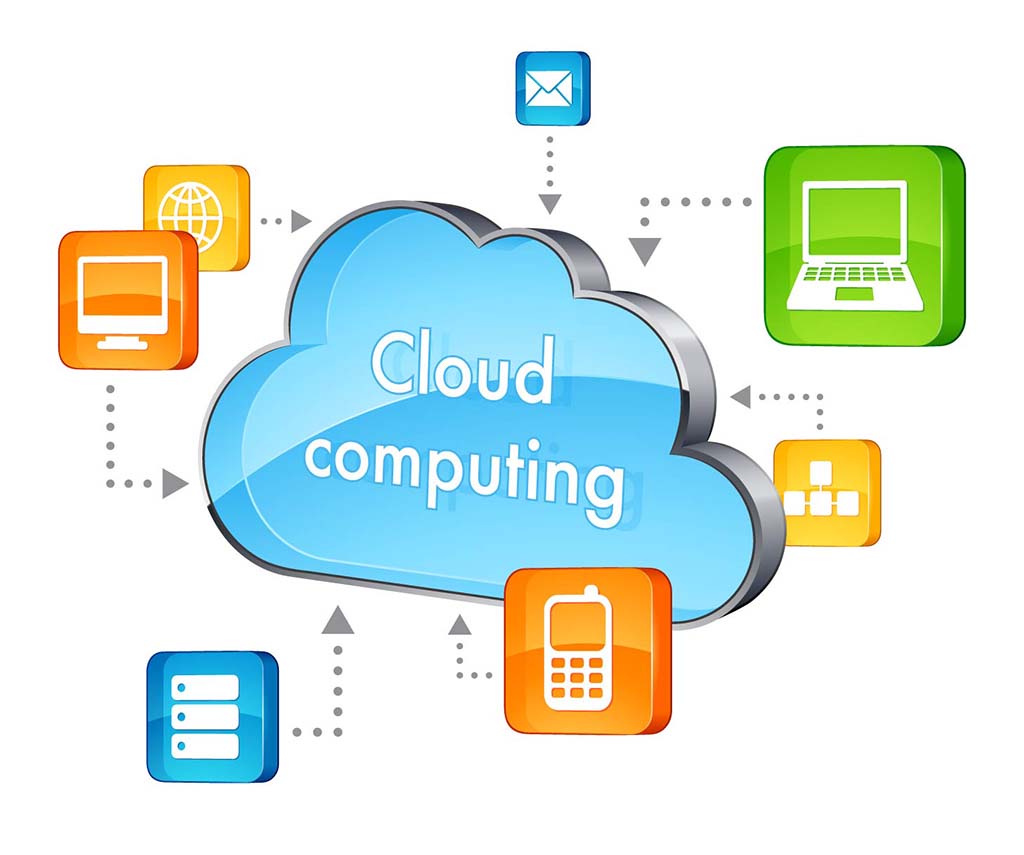
Table of Contents
Distributed Cloud
In today’s digital landscape, cloud computing has become the backbone of modern businesses, offering unparalleled flexibility, scalability, and accessibility. However, traditional cloud solutions have their limitations, particularly in terms of latency, data sovereignty, and compliance. This has led to the emergence of distributed cloud architecture, revolutionizing the way organizations leverage cloud technology.
What is Distributed Cloud?
Distributed cloud, also known as edge computing, refers to the decentralization of cloud resources to geographically dispersed locations closer to end-users or data sources. Unlike centralized cloud infrastructure, where data processing and storage occur in a single remote data center, distributed cloud leverages a network of edge nodes or data centers strategically positioned across various locations.
How Does Distributed Cloud Work?
Distributed cloud works by extending cloud services and capabilities to the edge of the network, allowing for faster data processing, reduced latency, and improved performance. Edge nodes, which can be deployed in remote offices, retail stores, or IoT devices, act as mini data centers, enabling local computation and storage. These edge nodes are seamlessly integrated with the centralized cloud infrastructure, ensuring consistent management and orchestration of resources.

Advantages of Distributed Cloud
- Resilience and Fault Tolerance: Distributed cloud architecture distributes computing resources across multiple locations, reducing the risk of downtime or data loss due to failures in a single data center. This redundancy enhances system reliability and ensures continuous service availability.
- Improved Performance: By deploying resources closer to end-users or devices, distributed cloud solutions can minimize latency and improve application response times. This is particularly beneficial for latency-sensitive applications such as real-time analytics, gaming, or IoT devices.
- Scalability: Distributed cloud platforms can easily scale resources up or down based on demand, allowing organizations to efficiently manage fluctuating workloads without over-provisioning resources.
- Data Sovereignty and Compliance: Distributed cloud models enable data to be stored and processed in specific geographic regions to comply with regulatory requirements or data sovereignty laws. This ensures that sensitive data remains within legal boundaries and under the jurisdiction of appropriate authorities.
- Cost Optimization: By distributing workloads across multiple cloud providers or regions, organizations can optimize costs by leveraging competitive pricing, avoiding vendor lock-in, and utilizing resources more efficiently.
- Security Enhancement: Distributing data and workloads across multiple locations can enhance security by reducing the impact of localized security breaches or cyber attacks. Additionally, distributed cloud architectures often incorporate advanced security measures such as encryption, access controls, and threat detection mechanisms.
- Flexibility and Hybrid Cloud Integration: Distributed cloud environments offer greater flexibility for organizations to mix and match services from different providers or deploy hybrid cloud solutions seamlessly. This enables businesses to leverage the strengths of various cloud providers while maintaining compatibility with existing on-premises infrastructure.
- Edge Computing Capabilities: Distributed cloud architectures facilitate edge computing, allowing data processing and analysis to occur closer to the source of data generation. This enables real-time insights, reduced network congestion, and support for edge devices with limited connectivity.
Challenges in Implementing Distributed Cloud
Despite its numerous benefits, implementing distributed cloud architecture comes with its own set of challenges and considerations.
Security Concerns
One of the primary challenges in distributed cloud is ensuring data security and privacy across decentralized environments. Edge nodes may lack the robust security measures found in centralized data centers, making them vulnerable to cyber threats and unauthorized access. Organizations must implement robust encryption, access controls, and threat detection mechanisms to safeguard sensitive data at the edge.
Data Management
Managing data across distributed environments can be complex, especially when dealing with large volumes of decentralized data. Organizations must develop efficient data management strategies to ensure data consistency, integrity, and compliance with regulatory requirements. This includes implementing data replication, synchronization, and backup mechanisms to maintain data coherence and availability across edge nodes.
Network Latency
While distributed cloud reduces latency by processing data locally, it also introduces new challenges related to network latency and bandwidth constraints. Ensuring low-latency communication between edge nodes and centralized cloud services requires optimizing network infrastructure, minimizing data transmission delays, and prioritizing critical workloads over less time-sensitive tasks.
Use Cases of Distributed Cloud
Distributed cloud finds applications across various industries and use cases, including:
Edge Computing
Edge computing refers to the practice of processing data closer to the source of data generation, such as IoT devices, sensors, or edge servers, rather than relying solely on centralized data centers or cloud computing resources. This decentralized approach brings computing capabilities closer to the edge of the network, reducing latency, improving application performance, and enabling real-time data processing and analysis.
The proliferation of IoT devices, autonomous vehicles, and other edge devices that generate large volumes of data in real-time has fueled the adoption of edge computing. By processing data locally at the edge, organizations can reduce the amount of data that needs to be transmitted to centralized data centers or cloud environments, minimizing network bandwidth requirements and latency.
Edge computing architectures typically involve a distributed network of edge devices, gateways, and edge servers located close to the point of data generation. These edge nodes can perform data filtering, aggregation, and analysis tasks, allowing for rapid decision-making and automation without relying on round-trip communication to centralized data centers.
Key benefits of edge computing include:
- Reduced Latency: By processing data locally at the edge, edge computing minimizes the time it takes for data to travel between devices and centralized data centers, resulting in lower latency and improved responsiveness for applications that require real-time data processing.
- Improved Reliability: Edge computing architectures are inherently resilient to network outages or disruptions since they can continue to operate autonomously even when disconnected from centralized resources. This enhances the reliability and availability of edge applications in environments with intermittent connectivity.
- Bandwidth Optimization: Edge computing helps optimize network bandwidth usage by reducing the volume of data that needs to be transmitted to centralized data centers or cloud environments. This is particularly beneficial for applications that generate large amounts of data, such as video surveillance or industrial IoT deployments.
- Data Privacy and Security: By processing sensitive data locally at the edge, organizations can enhance data privacy and security by minimizing the exposure of sensitive information to external networks. This is especially important for industries like healthcare, finance, and manufacturing, where data sovereignty and regulatory compliance are critical considerations.
- Scalability and Flexibility: Edge computing architectures are highly scalable and flexible, allowing organizations to deploy edge nodes and services incrementally based on the specific requirements of their applications. This enables distributed computing resources to scale dynamically in response to changing workloads and demand patterns.
IoT Applications
The Internet of Things (IoT) has revolutionized various industries by enabling the connectivity and exchange of data between physical devices and systems. Here are some common IoT applications across different sectors:
- Smart Home Automation: IoT devices such as smart thermostats, lighting systems, security cameras, and voice-controlled assistants allow homeowners to automate and control various aspects of their homes remotely through smartphone apps or voice commands.
- Industrial Internet of Things (IIoT): In manufacturing and industrial settings, IoT sensors and devices are used for asset tracking, predictive maintenance, condition monitoring, and optimization of production processes. IIoT enables organizations to improve operational efficiency, reduce downtime, and enhance safety.
- Smart Healthcare: IoT technology is revolutionizing healthcare through applications like remote patient monitoring, wearable health trackers, smart medical devices, and telemedicine solutions. These IoT-enabled healthcare systems enable continuous monitoring of patients’ vital signs, early detection of health issues, and personalized treatment plans.
- Smart Cities: IoT plays a crucial role in creating smart, sustainable cities by deploying sensors and connected devices for traffic management, waste management, environmental monitoring, energy optimization, public safety, and infrastructure management. Smart city initiatives aim to improve quality of life, reduce resource consumption, and enhance urban planning and governance.
- Precision Agriculture: IoT sensors, drones, and satellite imaging are used in precision agriculture to monitor soil conditions, crop health, weather patterns, and irrigation systems. By collecting and analyzing data in real-time, farmers can optimize crop yields, reduce water usage, minimize environmental impact, and make data-driven decisions for farm management.
- Connected Vehicles: IoT technology is transforming the automotive industry with connected vehicle solutions that enable features like remote diagnostics, predictive maintenance, vehicle tracking, fleet management, and in-car infotainment systems. Connected vehicles improve safety, efficiency, and driver experience while paving the way for autonomous driving technologies.
- Retail and Supply Chain Management: IoT-enabled inventory management systems, RFID tags, and smart shelves help retailers optimize inventory levels, enhance product visibility, streamline supply chain operations, and provide personalized shopping experiences. IoT also enables retailers to track consumer behavior, gather insights, and deliver targeted marketing campaigns.
- Energy Management: IoT devices and smart meters enable real-time monitoring and control of energy consumption in residential, commercial, and industrial buildings. Smart grids and energy management systems optimize energy distribution, reduce wastage, balance supply and demand, and support the integration of renewable energy sources.
Multi-Cloud Environments
Multi-cloud environments refer to the use of multiple cloud computing services from different providers, rather than relying on a single cloud provider. In a multi-cloud architecture, organizations leverage a combination of public cloud, private cloud, and hybrid cloud services to meet their specific business needs and objectives.
There are several reasons why organizations choose to adopt a multi-cloud strategy:
- Vendor Diversity: Using multiple cloud providers reduces dependency on a single vendor, mitigating the risk of vendor lock-in and ensuring flexibility in negotiating contracts and pricing.
- Best-of-Breed Solutions: Different cloud providers offer unique services, capabilities, and pricing models. By adopting a multi-cloud approach, organizations can select the best-suited services from each provider to meet their specific requirements.
- Geographic Redundancy: Multi-cloud architectures enable organizations to distribute workloads across multiple geographic regions, improving resilience, disaster recovery, and ensuring compliance with data sovereignty regulations.
- Performance Optimization: Leveraging multiple cloud providers allows organizations to deploy workloads closer to end-users or devices, reducing latency and improving application performance, particularly for globally distributed users.
- Risk Management: Multi-cloud environments provide redundancy and resilience against cloud service outages, data breaches, or other security incidents. By diversifying across multiple providers, organizations can minimize the impact of potential disruptions.
- Cost Optimization: Multi-cloud strategies enable organizations to optimize costs by leveraging competitive pricing, discounts, and incentives offered by different cloud providers. Additionally, workload placement based on pricing models and resource availability helps optimize cloud spending.
- Compliance and Governance: Multi-cloud architectures enable organizations to tailor their cloud deployments to meet specific compliance requirements and regulatory standards in different geographic regions or industries. This includes data residency, privacy regulations, and industry-specific certifications.
- Innovation and Flexibility: Embracing a multi-cloud approach fosters a culture of innovation by encouraging experimentation with different cloud services, technologies, and deployment models. This flexibility enables organizations to adapt quickly to changing business needs and technological advancements.
Key Players in Distributed Cloud Market
The distributed cloud market has seen significant growth in recent years, with several key players emerging as leaders in this space. One prominent player is Amazon Web Services (AWS), offering services like AWS Outposts and AWS Wavelength to extend its cloud infrastructure to customer premises and the edge. Microsoft Azure is another major player, providing distributed cloud solutions through Azure Arc and Azure Edge Zones, enabling hybrid and edge computing scenarios.
Google Cloud Platform (GCP) is also a notable contender with its Anthos platform, facilitating the management of distributed applications across on-premises and cloud environments. Additionally, IBM Cloud offers IBM Cloud Satellite for extending its cloud services to various locations, while VMware’s Tanzu and VMware Cloud on AWS cater to distributed cloud needs with Kubernetes-based solutions and hybrid cloud deployments. Other key players include Oracle Cloud with its Oracle Dedicated Region Cloud@Customer and Alibaba Cloud with its Hybrid Cloud and Apsara Stack solutions. These companies continue to innovate and expand their offerings in the distributed cloud market, catering to the diverse needs of enterprises seeking scalable, resilient, and flexible cloud solutions across multiple locations.

Future Trends in Distributed Cloud
Several future trends are expected to shape the landscape of distributed cloud computing:
- Edge Computing Expansion: With the proliferation of IoT devices and the demand for low-latency applications, edge computing will continue to gain prominence. Distributed cloud platforms will increasingly incorporate edge computing capabilities to support real-time data processing and analytics closer to the source of data generation.
- 5G Integration: The rollout of 5G networks will accelerate the adoption of distributed cloud solutions, enabling high-speed, low-latency connectivity to edge devices. This integration will facilitate the development of innovative applications and services that require real-time responsiveness and massive data throughput.
- Hybrid and Multi-Cloud Orchestration: Organizations will continue to adopt hybrid and multi-cloud strategies to leverage the strengths of various cloud providers and optimize performance, cost, and compliance requirements. Distributed cloud platforms will evolve to offer seamless orchestration and management of workloads across diverse cloud environments.
- AI and Machine Learning Integration: Distributed cloud architectures will integrate AI and machine learning capabilities to automate resource management, optimize workload placement, and enhance security and performance. AI-driven insights will enable proactive decision-making and predictive analytics to optimize distributed cloud operations.
- Containerization and Kubernetes Adoption: Containerization technologies like Kubernetes will play a crucial role in deploying and managing distributed applications across hybrid and multi-cloud environments. Distributed cloud platforms will offer native support for containers and Kubernetes orchestration to streamline application development and deployment workflows.
- Enhanced Security and Compliance: As data privacy regulations become more stringent, distributed cloud providers will invest in advanced security measures to protect sensitive data across distributed environments. This includes encryption, zero-trust security models, and compliance automation tools to ensure adherence to regulatory requirements.
- Serverless Computing Paradigm: Serverless computing will continue to gain traction in distributed cloud environments, offering a cost-effective and scalable approach to application development and deployment. Distributed serverless platforms will enable developers to focus on building applications without worrying about infrastructure management.
- Interoperability and Standardization: Efforts to standardize distributed cloud architectures and promote interoperability between different cloud providers will increase. Industry initiatives and open-source projects will drive collaboration and innovation in the distributed cloud ecosystem, fostering vendor-neutral solutions and reducing vendor lock-in.
Conclusion
Distributed cloud represents a paradigm shift in cloud computing, offering unparalleled agility, performance, and reliability for modern digital enterprises. By distributing cloud resources to the edge of the network, organizations can overcome the limitations of traditional cloud models and unlock new opportunities for innovation and growth in an increasingly interconnected world.
FAQs
- What are the main benefits of distributed cloud?
- Distributed cloud offers cost efficiency, scalability, and reliability by decentralizing cloud resources to edge locations, reducing latency, and minimizing single points of failure.
- How does distributed cloud differ from traditional cloud computing?
- Traditional cloud computing relies on centralized data centers for processing and storage, whereas distributed cloud extends cloud services to geographically dispersed edge nodes for improved performance and responsiveness.
- What are some common challenges in implementing distributed cloud?
- Security concerns, data management complexity, and network latency are among the key challenges organizations face when implementing distributed cloud architectures.
- What industries benefit most from distributed cloud?
- Industries such as manufacturing, healthcare, retail, and transportation benefit greatly from distributed cloud, leveraging edge computing capabilities to drive innovation and improve operational efficiency.
- What role do edge nodes play in distributed cloud?
- Edge nodes act as mini data centers deployed closer to end-users or IoT devices, enabling local data processing, storage, and analytics to reduce latency and enhance user experience.









